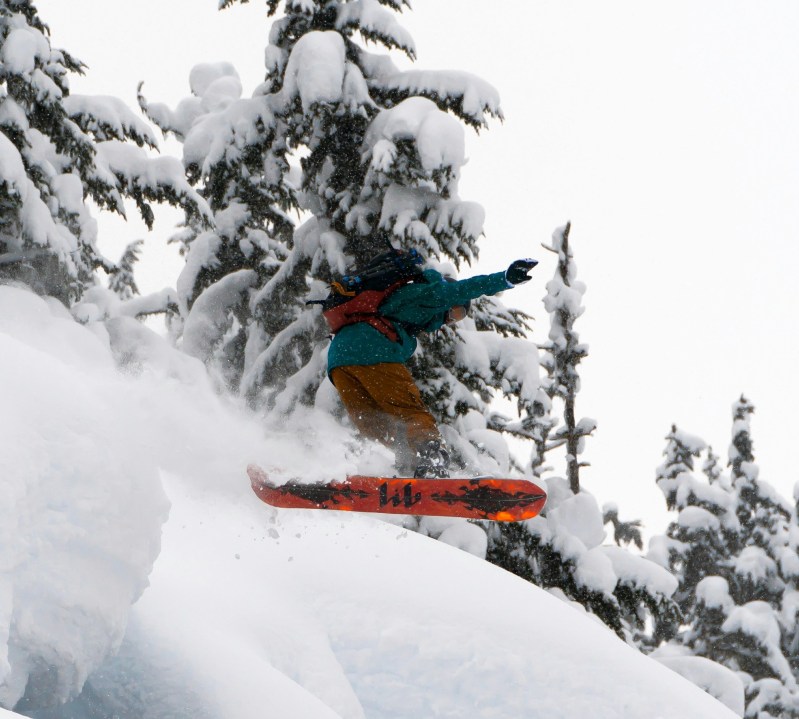
Fresh snow provides the finest sensations on a snowboard. The way the board floats and glides. How you can spray powder like a surfer. That fluffy, soft feeling that cushions every turn.
But when it gets deep, you might find yourself in a challenging situation. Falling and getting stuck on a powder day can throw a wrench in the experience. The snow feels like cement, weighing you down, with nowhere to turn.
When you fall on a powder day, there’s a simple technique to get back to the action. Here’s how.

Why falling in powder is so challenging
On a powder morning, you can’t wait to get after it. Soft turns and face shots await, providing stoke for miles. But when riding fresh snow, falling can feel like being stuck in quicksand. So it’s important to know how to wriggle your way out and get going again. All you need is this simple technique.
On Instagram, snowboardingsta shows how.
- If you fall on your back, just roll on your side.
- Dig in the board’s tail and point the nose in the air.
- From there, using your arms and hands, push against the snow where your back just was — that’s where the most packed snow is.
- Shimmy forward, hop out, and point it.
You’re good to go.

Additional techniques for riding powder
While knowing how to get up in powder is useful, it’s nice to not fall in the first place. Here are some fresh snow riding tips, along with some powder board recommendations. Let’s dive in.
- To effectively ride powder, you have to keep the board planing above the snow. To do that, it helps to adjust your weight distribution or select a board specifically made for deep conditions.
- When I ride powder, I like to shift my hips rearward, taking weight off the nose, so it lifts up and above the snow. Just add a little rear knee flex, while sliding your hips toward the tail. But don’t go overboard — aim for around 45% front and 55% rear weight distribution.
- Powder-specific snowboards do the work for you, with designs tailored to float and glide. Boards like the Burton Short Stop and Jones Storm Wolf feature rockered noses and tapered shapes that thrive in deep conditions. They also have a surfy feel, letting you slash and rip as if riding a wave.
Fresh powder is a high point of the snowboarding experience. Offering soft and silent exhilaration, riding deep snow is all about soul. When you fall on a powder day, it can feel like being stuck in mud. But by using the method described, you can get back to the fresh stuff in seconds. It also helps to use specific riding techniques or go for tailor-made equipment. Either way, you’re in for a special day on the mountain.



